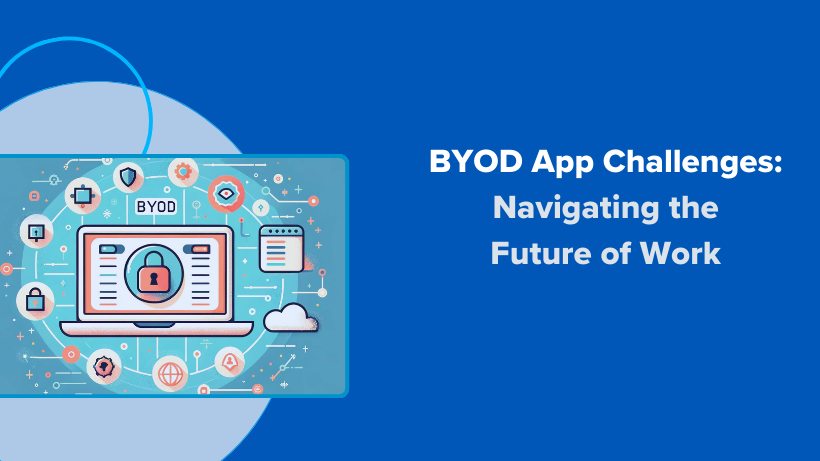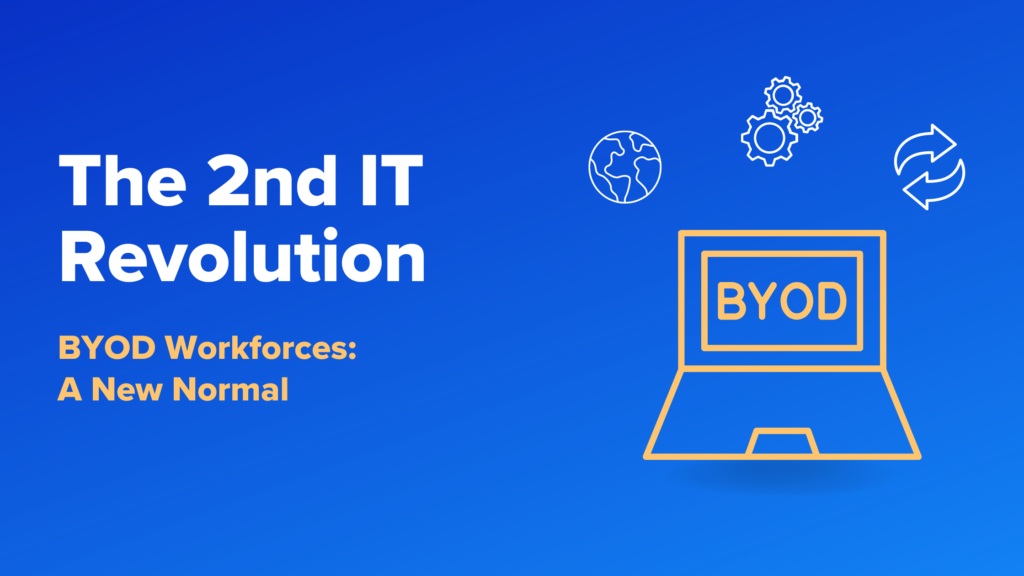BYOD App Challenges: Navigating the Future of Work

In our exponentially evolving digital era, how we think about working has undergone a profound transformation. The global shift towards embracing remote work, once a novelty largely born from necessity, has become a cornerstone, with over 50% of companies now offering some flavor of remote work. This shift heralds the promise of unprecedented flexibility and productivity but not without its challenges. These challenges can be significant, namely the challenge of managing and distributing applications to globally distributed teams. This blog explores the complexities of ensuring seamless access to critical line-of-business applications, analyzing both the benefits and challenges of various tools that attempt to solve this challenge.
The adaptation to remote work requires strategic planning, especially in the approach to application management and delivery. Organizations are at a crossroads of sorts. Either they choose the path of providing teams with company owned and managed devices or navigate the nuances of a Bring Your Own Device (BYOD) policy. Whatever the decision, there will always be challenges in deploying, managing, and supporting applications across a diverse and distributed team. There’s no silver bullet here but there are options. Let’s dive in.
The Enduring Tradition: Virtual Desktop Infrastructure (VDI)
Virtual Desktop Infrastructure (VDI) has long been the go-to move for providing remote access to business tools, offering a centralized way to deliver full desktop environments or applications from a server to users. That’s one of its strengths; its ability to centralize control, which increases security and compliance. This is essential for industries who at their core deal with sensitive information. VDI also plays a critical role in disaster recovery strategies, lending its centralized nature to support the simplification of backup processes. For organizations that still have legacy applications hanging around, VDI enables the continued use of these applications by hosting them in a controlled, specific environment. There are for sure benefits of tradition, but the allure of VDI is quickly outshined by its shortcomings.
Traditional tools, Persistent shortcomings
VDI has inherent complexities, can be very costly, and the performance is highly problematic. Firstly, the initial setup of VDI infrastructure requires a considerable investment in hardware and software licenses. Beyond the initial investment, VDI requires ongoing resource allocation for optimal performance. As the number of users grows, the infrastructure needs to scale, which in turn drives exponential cost increases and complexity. The need for high-performance servers and network infrastructure to support a decent VDI experience can place a heavy burden on budgets and resources. Even when you throw money and resources at it, the user experience of VDI is lacking. Users often experience latency issues, especially those with sporadic internet connections or those located farther from where the applications and data are hosted. It also forces a standardized experience that doesn’t allow users to leverage the specific features and interfaces of their preferred operating systems like macOS
Remote Application Delivery More: Total Control with Remote Monitoring and Management (RMM)
A totally different beast, Remote Monitoring and Management (RMM) tools like Kaseya and Microsoft’s Intune offer a far different approach to application management with a bit extra thrown in the mix. These tools allow IT teams to not only deliver applications but to remotely oversee and manage the endpoints in an attempt to strike a balance between maintaining control and offering some flexibility. This approach is a shift away from VDI towards decentralization, and is particularly suited to the dynamics of modern work, directly installing applications on user devices and enforcing updates and security patches.
The scalability of RMM tools is another advantage. They can adapt to the changing size of an organization without the need for massive infrastructure adjustments. This scalability also applies to the management of a diverse array of devices and operating systems. Again, a ton of benefits here, but there’s tradeoffs.
A Double-Edged Sword
While these tools do streamline application deployment, enhance device security and scale relatively easily, they introduce perhaps greater challenges than they solve. The detailed monitoring capabilities necessary for enforcing security and compliance are seen by users as extremely invasive, especially in BYOD scenarios where the line between personal and work is fundamentally blurred. Addressing these privacy concerns requires crystal clear communication about the tools’ benefits, transparent policies, and safeguards to protect employee privacy. Even this isn’t enough for most users. No one likes the feeling of big brother watching when they shouldn’t. Additionally, the effectiveness of RMM tools hinges on reliable internet connection, along with IT expertise that may be beyond the investment capacity of smaller organizations.
Venn: A Modern Solution to Traditional Application Management and Delivery Problems
Venn is a thoughtful alternative to the more traditional, invasive and complex solutions you’ve come to know and tolerate. We’re on a journey to change the way the world works and empower organizations with the tools they need to harness the power of a globally distributed workforce. Venn’s Secure Enclave offers a different path to enabling secure remote work on personal devices.
Devices once relegated to being mere gateways to solutions like VDI or restrained and monitored by RMM tools are now free to be used as nature intended. Work applications run locally on the computer within a company-controlled Secure Enclave, where all data is encrypted and access managed. The ever evolving app deployment and management system carefully balances providing IT with the tools they need to deliver critical line-of-business applications without sacrificing the sanctity of personal devices.
Traditional solutions like VDI and RMM laid the foundations for enabling remote work. They’ve brought us as far as they can, but the challenges of the modern workforce is a chasm they simply cannot cross. We invite you to cross the chasm with Venn and discover the new way to work.
Chris Johnson
More Blogs


